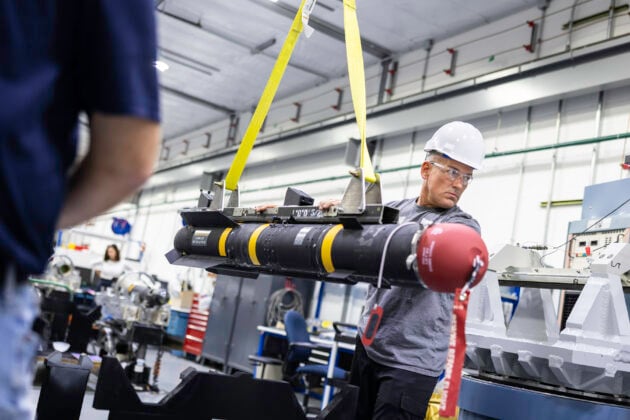
NATO allies and European defense leaders are moving to reduce reliance on vulnerable global supply chains by prioritizing stockpiles, acquisition, and control of critical raw materials (CRMs) vital to modern military systems.
The International Institute for Strategic Studies (IISS) has reported that these efforts reflect a growing recognition of how supply chain weaknesses can affect deterrence, readiness, and defense production.
At the NATO Summit Defence Industry Forum held on June 24, 2025, twelve allied nations agreed to launch a new High Visibility Project focused on the joint acquisition, transportation, storage, and management of defense-critical raw materials, including through recycling. According to the IISS Capability Vignette, this move comes amid heightened geopolitical competition and increasing awareness of how material shortfalls could delay or limit military operations.
These materials—ranging from neodymium and dysprosium for sensors and radars to beryllium and titanium for structural components—are foundational to everything from precision-guided munitions to propulsion systems. Disruption in their supply can ripple through defense industries with long-term effects.
NATO previously released a Defence-Critical Supply Chain Security Roadmap in June 2024, followed by a December 2024 list of 12 critical materials deemed “integral to the manufacture of advanced defense systems and equipment.”
However, as noted by IISS, NATO’s efforts will require broader coordination with the European Union and national governments to produce lasting results.
The European Union has taken parallel steps. In March 2025, the EU published a list of 47 strategic CRM projects under the 2024 Critical Raw Materials Act. An additional 13 projects outside the EU were added in June.
The White Paper for European Defence – Readiness 2030 emphasized CRMs as essential not just for defense, but for industrial and economic competitiveness. It also outlined intentions for a joint procurement platform for CRMs and called for the European Defence Agency to identify high-priority materials and diversify sourcing strategies.
Private industry and national governments have responded as well. According to IISS, European firms have expanded nitrocellulose production, a key energetic material, and invested in substitution technologies. Rheinmetall, MBDA, and the Czech CSG Group are among the companies cited for acquisitions aimed at securing upstream control of defense-relevant materials.
Stockpiling has also become a policy focus. The EU’s Preparedness Union Strategy now includes a stockpiling component, and in July 2025, Brussels released a new EU-wide stockpiling strategy. Although not specifically tied to defense, it includes reserves of components and raw materials relevant to national security. MBDA CEO Eric Béranger stated that the company has already begun to increase metal reserves to mitigate supply disruptions.
In parallel, the U.S. government expanded its role in CRM supply in 2025, becoming the largest shareholder in the country’s only operating rare-earths mine. The move is part of a broader strategy to develop domestic CRM capacity and reduce exposure to foreign-controlled sources.
The IISS warns that while initiatives such as onshoring, friendshoring, and raw materials diplomacy may improve resilience, they will also increase costs and raise regulatory hurdles. As stated in the report, “onshoring and developing CRM sources at home will likely be more expensive than relying on the globalised supply chain, making political and financial support more important”.
With military technologies growing more dependent on rare earth elements and other sensitive inputs, NATO and the EU appear to be taking concrete steps to reduce risk. However, the path to securing supply will require sustained coordination between governments, industry, and international partners.